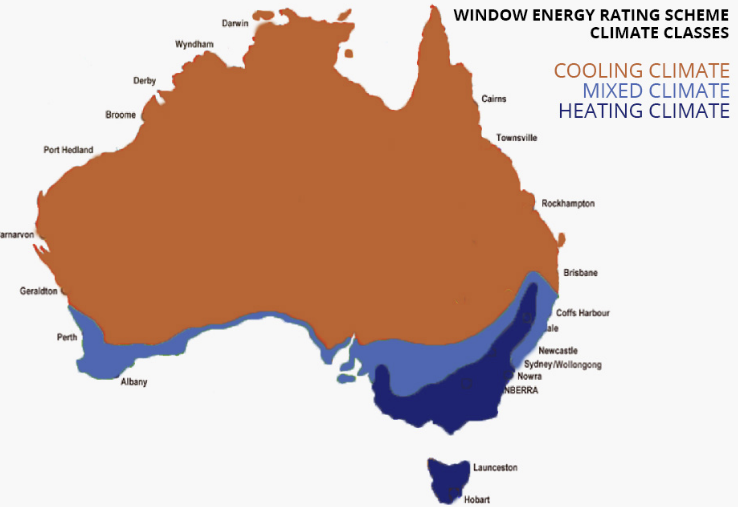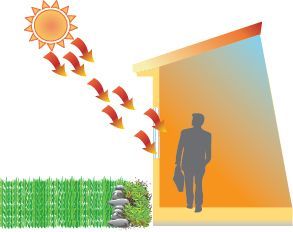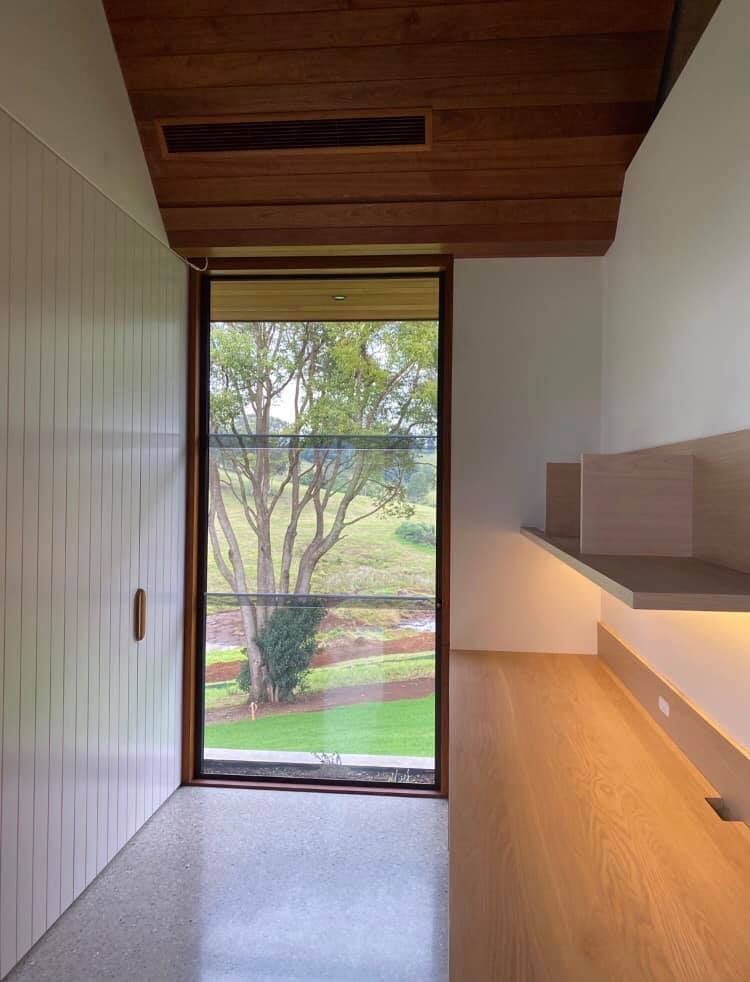Architectural Solutions on the Sunshine Coast
- Locally owned & operated on the Sunshine Coast
- Friendly & helpful team focused on great service
- Quick turnaround from quote to installation
Architectural Solutions on the Sunshine Coast
Ensuring Glazing Meets Industry Standards
At Architectural Glass Solutions, we offer glazing and framing systems designed to meet a variety of project-specific challenges and Australian industry standards AS1288 and AS2047. Our solutions support outcomes in acoustic control, bushfire protection, energy efficiency, accessible living environments and more, helping architects and builders meet both functional and regulatory expectations.
Whether you’re working within BAL-rated zones, aged care settings or designing for thermal performance, our systems align with NCC requirements and Australian Standards. We also provide solutions suitable for NDIS-supported housing, where accessibility, durability and safety are essential.
Architectural guidelines exist to ensure safer, more liveable and sustainable buildings—and our role is to help you meet them with confidence and precision.
Contact us on(07) 5449 7512
to find out more. We assist clients throughout the Sunshine Coast and Gympie regions.
Acoustics Solutions
Acoustic performance in windows refers to their effectiveness in insulating against external noise. Benefits of High Acoustic Performance Windows include noise reduction, improved property value and enhanced privacy.
If you would like to improve your indoor comfort and quality of life by reducing unwanted sound from sources like traffic, airplanes, and neighbours, you may wish to consider some of the following factors that we can discuss with you:
- Laminated glass includes an interlayer that effectively absorbs sound vibrations, particularly useful for blocking high-frequency noise such as voices and sirens
- Thicker glass provides better insulation overall, reducing sound transmission across a broader range of frequencies
- Acoustic Glass is a laminated glass with a specially developed interlayer to dampen noise, providing enhanced sound insulation performance. For example, using a 6.5mm VLam™ Hush achieves the same acoustics compared to 10.38mm standard laminate, offering thinner glass options with superior acoustic performance. ComfortHush™ 6.5mm and 6.88mm provides a 6dB improvement compared to ordinary 3mm glass found in many residential windows.
- Double-glazed units help to insulate against noise due to the air gap between the panes. Using different thicknesses of glass and glass types such as acoustic laminate in a dual-pane setup can greatly enhance sound control.
- Framing type makes a difference as some windows provide a tighter seal. Casement and awning windows generally offer better acoustic performance compared to sliding windows, which can have more air leakage due to their design.
- Seals and Installation quality are extremely important. Proper sealing around the window is crucial as well as the use of high quality seals. Air leaks through poorly fitted windows can significantly diminish their sound-dampening qualities. High-performance windows often have specialized seals that ensure a tight fit, which further enhances sound insulation
Screening Solutions
Screening options are plentiful and custom made to fit your doors and windows. Choose from standard fibre or aluminium mesh for keeping insects at bay, retractable screens for your bifolds, barrier screens for fall prevention, or stainless steel mesh security screens for intruder prevention. Give us a call to discuss your screening requirements.
For our security screens we trust in and choose to supply Commandex Secureview Screens for your doors and windows. They are made from high quality materials and offer a wide range of features to meet Australian Standard AS5039-2008 with additional testing to ensure they protect homes in cyclones, fires and corrosion prone areas. Secureview has been independently tested to meet Bushfire Protection AS3959-2009 up to BAL 40. Also offering their Saltwater Series with an extended 20 year warranty, these screens are made from 316 marine grade stainless steel woven mesh, specifically powder coated for harsh conditions. The mesh is chosen for its superb strength, durability and corrosion resistance and is designed and recommended for optimum performance and durability in extreme environments including:
• Coastal areas within 500m from the coastline or up to 2 km for properties located on an escarpment, where prevailing wind will carry salt air
• Iron rich red dust prone areas
• Heavy industrial areas
This is paragraph text. Click it or hit the Manage Text button to change the font, color, size, format, and more. To set up site-wide paragraph and title styles, go to Site Theme.
Bushfire Solutions
In bushfire-prone areas, compliance with BAL (Bushfire Attack Level) requirements is critical. We provide window and door systems that meet specified BAL ratings, using approved materials and seals to reduce risk. These solutions offer protection without compromising design, helping projects meet safety standards and building code regulations in vulnerable zones.
Bushfire Attack Requirements
Building standards require every new home built in bushfire-prone areas to use bushfire rated building materials for construction.
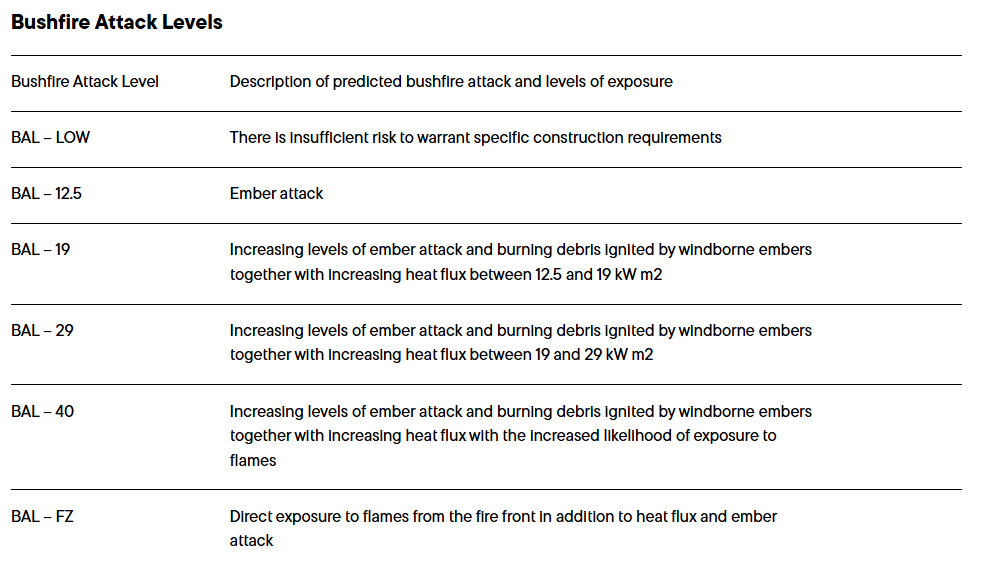
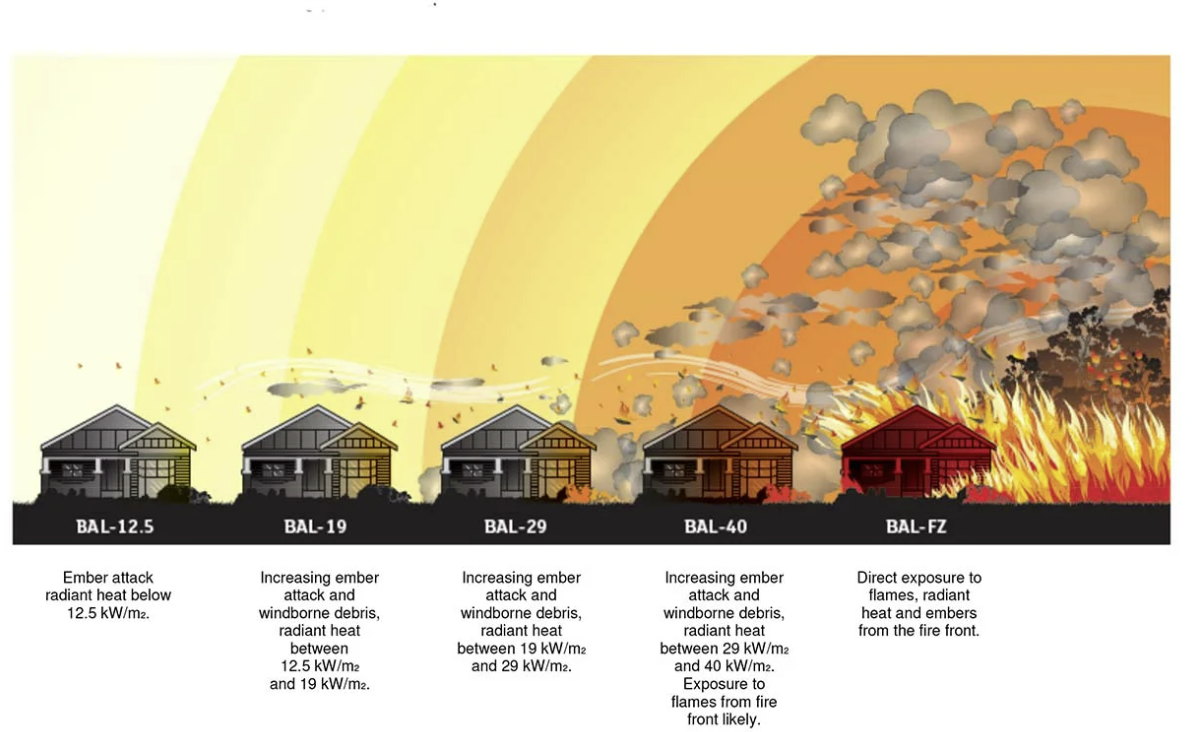
Energy Efficiency Solutions
According to the National Construction Code (NCC), Queensland falls into a cooling climate zone, meaning energy efficiency efforts focus on reducing heat gain from the sun. Here on the Sunshine Coast, we fall into climate zone 2 (Subtropical), and as a result, it is important that your windows and doors have a low Solar Heat Gain Coefficient (SHGC) to prevent sunlight from entering and heating your home. At the same time, we experience mild winters, so having windows with a lower U-value is equally as important. A lower U-value equates to better insulation properties, which minimise heat loss.
Choosing energy-efficient windows will make your home more comfortable, dramatically reduce your energy costs and help to create a brighter, cleaner and healthier environment. Windows are possibly the most complex and interesting elements in the fabric of our homes. They provide light and fresh air and offer views that connect our interior living spaces with the great outdoors. However, windows can represent a major source of unwanted heat gain in summer and significant heat loss in winter. Windows can severely impact the heating and cooling loads of a building. Between 46%-61% of a home’s heating energy can be lost, and between 79%-86% of its heat is gained through windows. Improving their thermal performance increases comfort and reduces energy costs and Australia’s greenhouse gas emissions.
Here at AGS we can fabricate doors and windows in compliance with WERS (Window Energy Rating Scheme) which is a system used in Australia to measure and compare the energy efficiency of windows and glazed doors. It provides scientifically-based ratings for window products and helps consumers and builders choose windows that improve thermal comfort, reduce greenhouse gases and improve and energysavings. These ratings are based on simulations by independent accredited labs using the following factors:
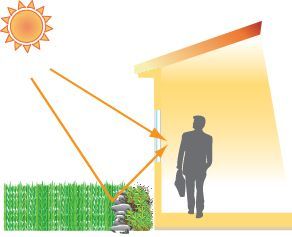
Visible Light Transmittance (TVw)
Visible transmittance (Tvw) measures how much light comes in through a window.
It is an optical property that indicates the amount of visible light transmitted.
Tvw is expressed as a decimal between 0 and 1. The higher the number, the more light is transmitted.
Solar Heat Gain Coefficient (SHGCw)
Solar Heat Gain Coefficient (SHGCw) measures how readily heat caused by sunlight flows through a window.
The SHGCw is the fraction of incident solar radiation admitted through a window, both directly transmitted, and absorbed and subsequently released inward.
SHGCw is expressed as a decimal between 0 and 1. The lower a window’s SHGCw, the less solar heat it transmits.
U-Value (Uw) U-Value (Uw) measures how readily a window conducts heat. It is a measure of the rate of non-solar heat loss or gain through the assembly.
The rate of heat is indicated in the terms of the U-Value of a window assembly which includes the effect of the frame, glass, seals and any spacers.
The lower the U-Value, the greater a window’s resistance to heat f low and the better its insulating value
The following options or combinations of these, can be used to help achieve greater energy-efficiencies in your glazing:
Double glazing: Known as either DGUs, or IGUs, these sealed units made up of two pieces of glass separated by a central air gap, most commonly filled with Argon gas. This helps to trap warm air from heating systems or cold air from air conditioning to assist in keeping you cooler in the summer and warmer in the winter. Hybrid units containing a combination of better performing glass types will provide a more efficient result.
Low-E coatings: Reflect solar heat while allowing natural light.
Tinted glass: Minimizes glare and solar heat gain.
Thermal breaks: When a less conductive material such as Polymide is inserted between the inner and outer parts of the metal frame. This break interrupts the thermal bridge, significantly reducing the flow of heat.
Sashless Windows
For Customers & Architects wanting an elegant and simplistic window, Queensland Sashless Windows are our preferred supplier. With 30 years of industry experience, they are a leading supplier and installer of sashless windows throughout Queensland & Northern New South Wales. Their overlapping counter balanced glass panels give the appearance of a fixed panel with no horizontal aluminium to spoil your view. We work alongside Queensland Sashless Windows to fabricate and install your chosen frame type and they custom make & install their sashes into our commercial frames. Available in a variety of vertical or horizontal configurations and glass types, this window offers a unique anti-intruder blocking barrier, providing a security window system like no other window on the market today

Frequently Asked Questions
What is the benefit of Energy Efficiency glazing?
Energy Efficiency glazing helps maintain indoor temperatures, reducing the need for heating and cooling. This lowers energy bills and minimises greenhouse gas emissions.
What are BAL-rated windows and doors?
BAL-rated systems are tested and certified to resist fire exposure in bushfire zones. They use specialised materials and design features to prevent ember entry and withstand radiant heat.
Do your solutions meet National Construction Code (NCC) requirements?
Absolutely. All of our systems are designed to align with the NCC and relevant Australian Standards, ensuring safety, durability and performance.








